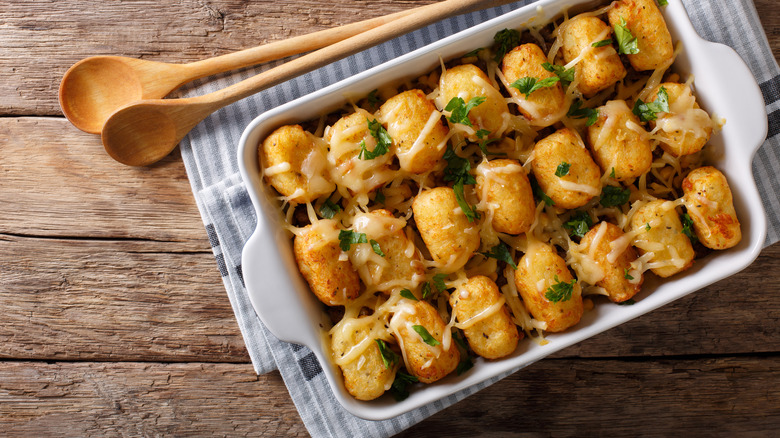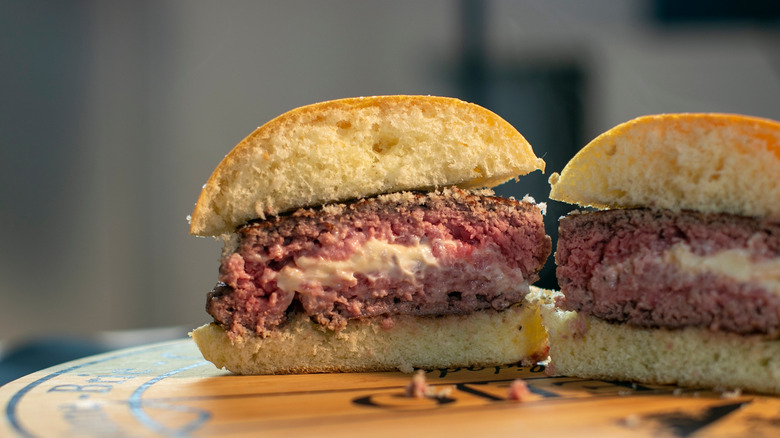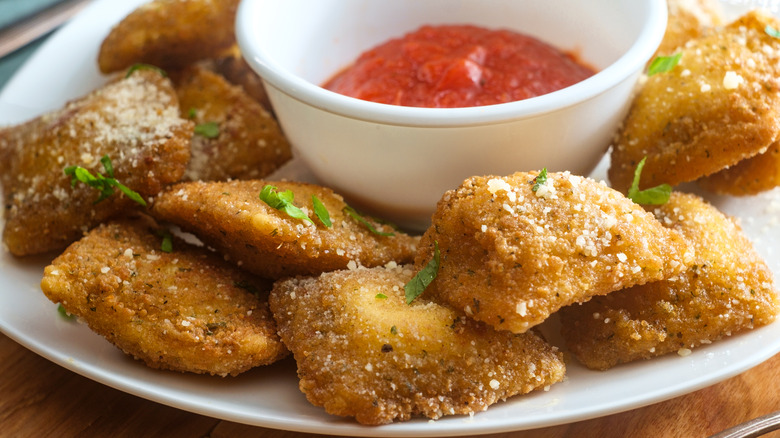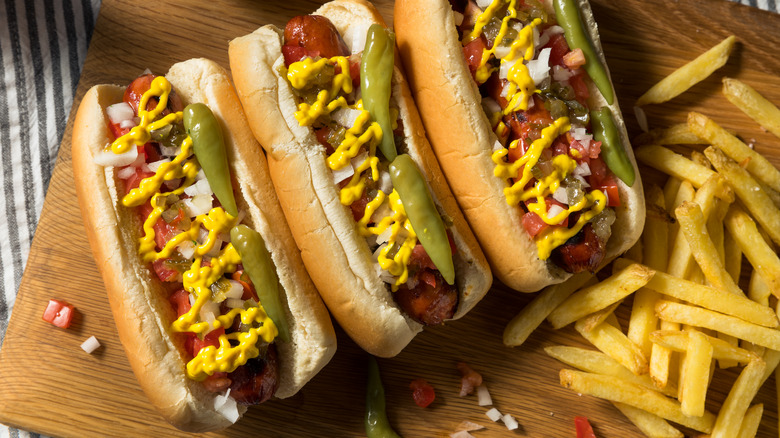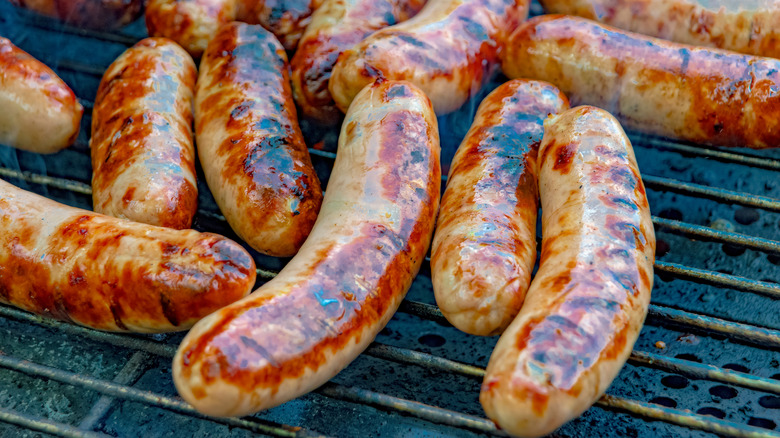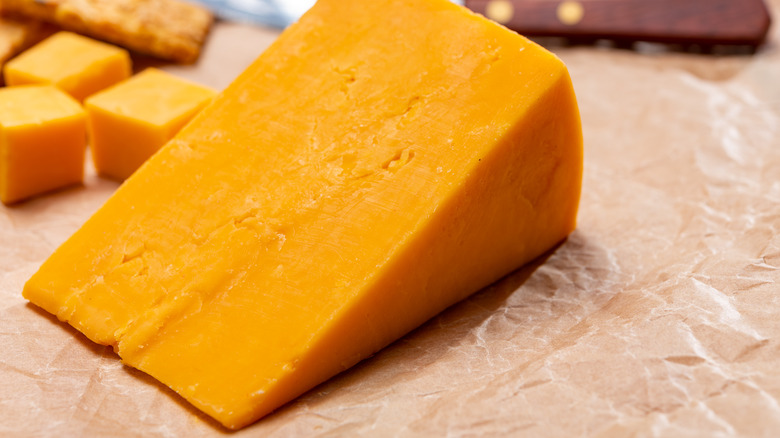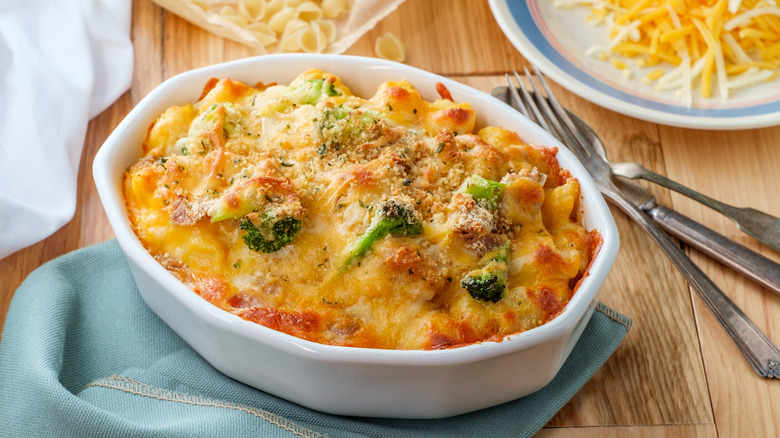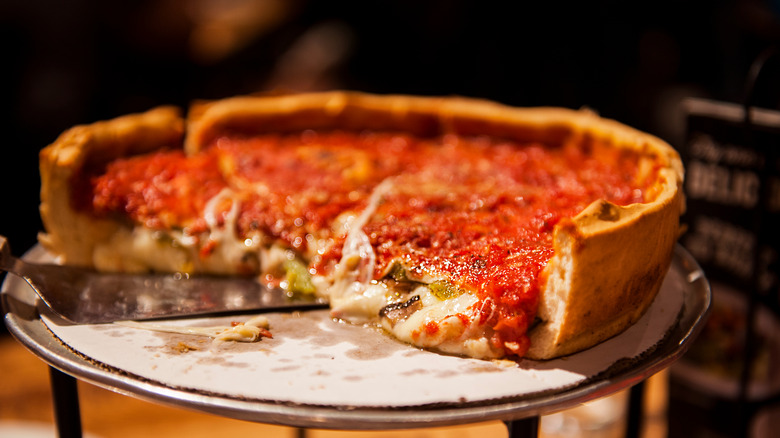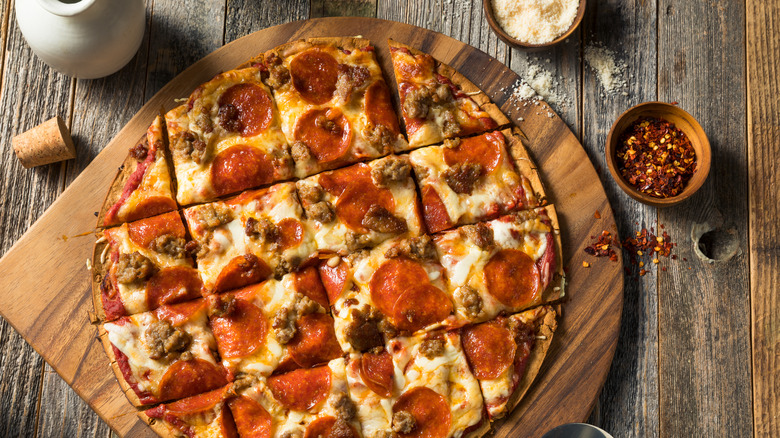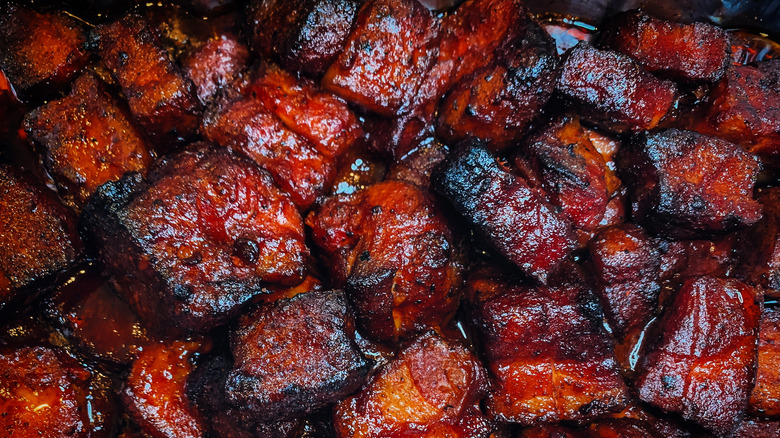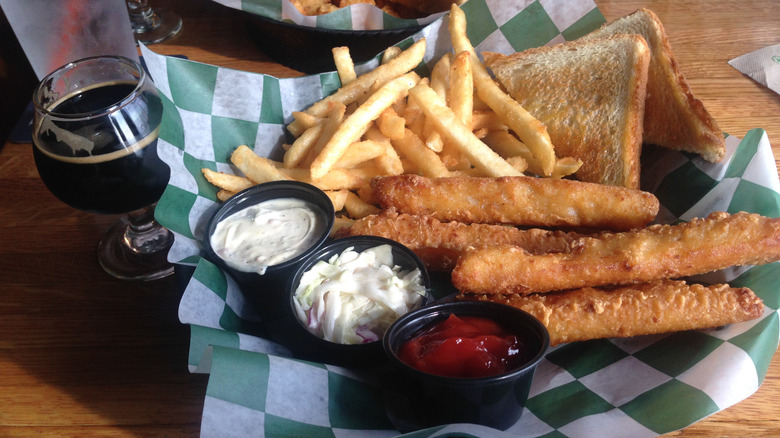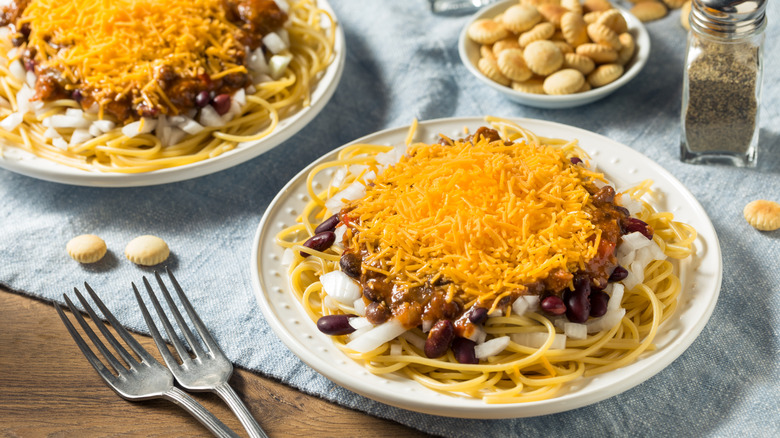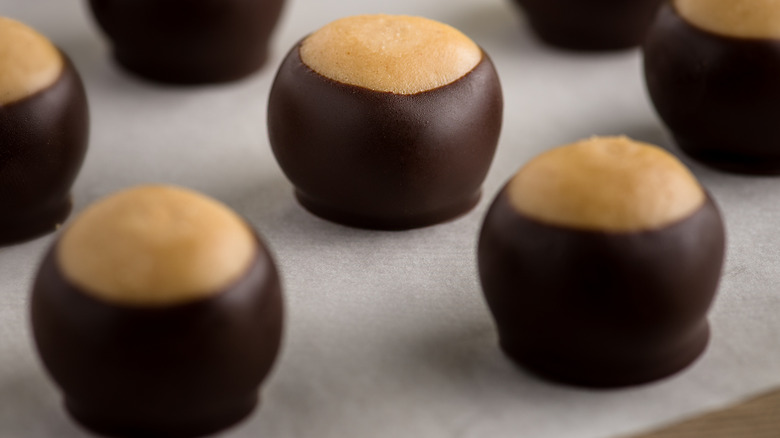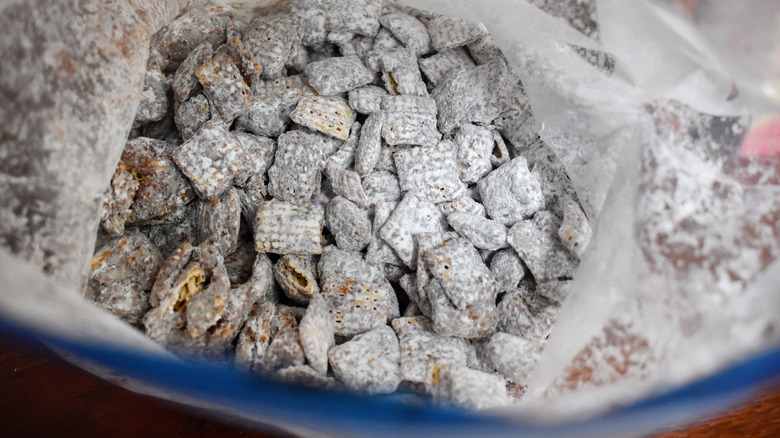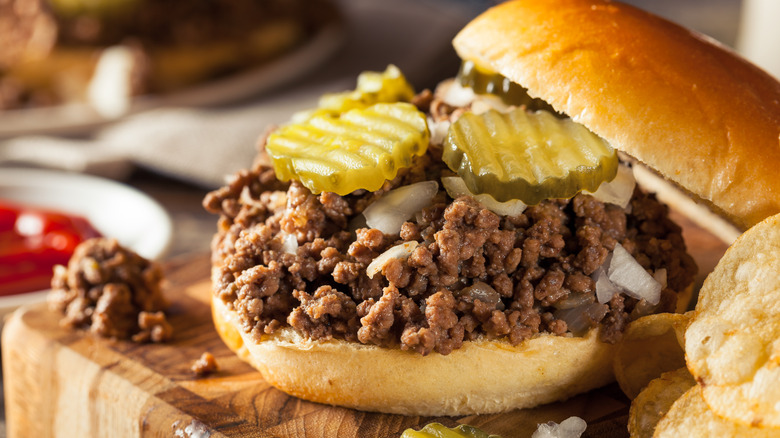What Foods Is The Midwest Actually Known For?
What do casseroles, fried fish, chili, and pizza all have in common? They've all been perfected, to some extent, in the American Midwest. Midwestern food is nothing if not homey and nostalgic: comfort food incarnate. But Midwestern food also boasts a rich and varied history, informed by waves of immigration — principally from Italy and Germany; by a cultural devotion to subsistence and a waste-not want-not mentality; by an ingrained neighborliness that makes sharing automatic and large portions a standby.
The results are oh-so varied and, in a word, delicious. From Chicago's deep dish to Wisconsin cheddar, from Friday fish fries to Thanksgiving hotdish, the dishes invented or perfected by Midwestern cooks over the past few centuries have proven to be innovative and pioneering in their ability to stretch ingredients while also endeavoring to make every mouthful a tasty one.
With that in mind, it's perhaps no surprise that these are the foods that the Midwest is known for.
Jucy Lucy burgers
That's no typo! At least not on our part. Minnesota's Ju(i)cy Lucy burger was ostensibly invented at Matt's Bar, a Minneapolis dive that claims to have pioneered the cheese-stuffed burger in the 1950s at the behest of a customer who wanted his cheese not atop but within his burger. (Just up the road, reports the Star Tribune, the 5-8 Club lays its own claim on originating the local fave — and given its popularity, that's perhaps no surprise!)
No matter who invented it, there's no denying the deliciousness — and Midwestern roots — of a true-blue Jucy Lucy. To make it, a burger patty is formed around a layer of American cheese, rendered molten in its time on the griddle. And while at 5-8 Club, the cooks tend to innovate: with stuffing-filled turkey burgers at Thanksgiving and even a PB&J version ... it's hard to beat the original.
But many have tried! In fact, Bon Appétit's Alex Delaney tasted nine different iterations of it to try to discern the city's best.
Toasted ravioli
As with so many of our favorite culinary origin stories from tarte Tatin to chocolate chip cookies, fans of toasted ravioli claim that this St. Louis delicacy was invented by accident.
According to St. Louis Magazine, the dish came to be when, after imbibing a bit too much vino, the cook at Oldani's accidentally dropped a few ravioli into the deep fryer. With a spark of that Midwestern waste-not-want-not mentality, Mrs. Oldani ostensibly salvaged them, sprinkled them with Parmesan, and sent them to the bar, where they were a quick hit (and why wouldn't they be?) Her husband chose the word "toasted" instead of "fried" to describe them so as not to give them a bad-for-you rep, and the naming convention stuck!
Today, toasted ravioli remains a popular bar snack in St. Louis and beyond, where they're especially tasty served with a side of marinara for dipping. If you're not in Missouri, you can always track them down at your local Trader Joe's and enjoy them at home!
Chicago-style hot dogs
Hot dogs themselves don't hail from Chicago — for that, we have Germany to thank. According to History.com, the hot dog was originally brought to the U.S. by German immigrants in the 1860s, and it's perhaps no surprise that their first port of call wasn't Chicago but New York, home to Ellis Island and thus the first home of many German immigrants to the New World.
But the Midwest has its share of dogs, of which the Chicago-style is perhaps the most famous. To be worthy of the name, according to TasteAtlas, all-beef franks must be served on a poppyseed bun and topped with yellow mustard, pickle relish, chopped onion, tomatoes, pickles, celery salt, and sport peppers — a small green chile that's almost always enjoyed pickled, for a hot-and-sour kick that really rounds out the flavor of a Chicago-style hot dog.
Whatever you do, hold the ketchup ... or risk getting run out of town!
Bratwurst
Yet another locally adopted German sausage, bratwursts — or "brats," as they're colloquially referred to in and around Wisconsin — are synonymous with cookouts in the Midwest, and perhaps nowhere more than in The Badger State. The New York Times even dubbed brats "the meat that made Sheboyagan famous," detailing the nearly religious zeal with which locals treat them. According to the Times, a true Sheboygan brat must be grilled over coal (never fried, griddled or boiled) and served on a split hard roll. The brat is then topped with coarse-ground brown mustard and raw onions for a truly local treat.
There are, of course, regional variations. In Green Bay or Milwaukee, brats are served, not on a hard roll, but on something more akin to a hot dog bun, which is slathered with (local!) butter before being piled with not one but two brats. Double the pleasure, double the fun!
Wisconsin cheddar cheese
Alongside brats, Wisconsin has become famous for its iteration of yet another food from the Old World: cheddar cheese. Originally hailing from the village of Cheddar in Somerset, England, cheddar cheese has been a Wisconsin staple since the mid-1800s, according to The Wisconsin Cheeseman. Today, the outlet reports, about a sixth of all of the cheddar produced in the U.S. hails from Wisconsin — about as much as is made in the entire U.K.!
And Wisconsin isn't just a big cheddar producer — it also makes some of the world's best. In last year's World Championship Cheese Contest, a cheddar cheese made in Monroe, Wisconsin made it into the top 20 worldwide. It's the perfect cheese to enjoy on its own or, why not, baked into another Midwest staple: a casserole. Its flavor shines best on its own, like in this delightful baked mac and cheese, but it also plays a wonderful second fiddle in other casseroles.
Casseroles or hotdish
Casseroles might seem like a pan-American specialty, with dishes like green bean casserole, tuna noodle casserole, and baked mac and cheese appearing on tables across the country — particularly at Thanksgiving. But the Midwest has a special relationship with the casserole, locally dubbed the hotdish.
For some, the terms are synonymous and interchangeable; for others, a narrower definition of a hotdish as a one-dish meal boasting veggies, a starch, a meat, and cream-of-something soup makes all hotdishes casseroles but not all casseroles (like enchiladas, lasagna, or shepherd's pie) necessarily hotdishes. In keeping with this narrower definition, this is subsistence food to the nth degree: a dish born during the post-War recession and invented to use shelf-stable convenience foods originally invented for their portability in a soldier's rucksack.
The most important thing to know about this Midwestern staple today? These dishes are comforting, easy to make, and delicious ... no matter what you call it. Oh, and a lot of them feature tater tots.
Chicago deep-dish pizza
Chicago deep-dish pizza may be the most famous Midwestern dish, though it's nothing if not divisive. (To wit: in a rant on his "The Daily Show," Jon Stewart described it as being "like sex with a corpse made of sandpaper" and an "unholy" combo of "cornbread biscuit" topped with marinara. He dubbed it, not a pizza, but "a f***ing casserole." (So we guess it's Midwestern in more than one way?)
And while there are some who would agree with Stewart, for others, Chicago's unique approach to one of America's favorite foods is a beloved classic.
Over the course of its long history, dating back to Neapolitan immigration over the course of the 19th and early 20th centuries, Chicago pizza has become perhaps best known for its inversion of the more typical pizza structure: atop the thick, buttery crust is layered first the cheese, then the toppings, and then the rich tomato sauce. Such a construction keeps the cheese and other toppings safe from burning and makes it, if not a casserole exactly, perhaps more of a pie than a pizza.
But oh, what a delicious pie.
St. Louis-style pizza
Standing in direct contrast to the thick slab that is Chicago-style pizza, with its deep, chewy, buttery crust, the pizza from St. Louis boasts an ultra-thin, unleavened, almost cracker-like base that is loaded high with toppings. Chief among them: Provel cheese, an unholy and divisive hybrid of cheddar, Swiss, and provolone that's so highly processed as to retain a gooey, buttery texture even when it cools. (Bad? Absolutely not. Actually cheese? Also, absolutely not.)
Traditionally cut into squares rather than triangles (Serious Eats claims it's because triangles would lack the structural integrity to support the incredible weight of all the toppings Missourians like to pile onto that ultra-thin crust), St. Louis pizza is a beloved local specialty that, while admittedly divisive further afield, may prove to convert even some pizza purists (though some need to refuse to call it pizza in order to admit they enjoy it!)
Kansas City BBQ
Barbecue is an American staple you'll find in many regions across the nation, with each area boasting its own local specialties, from Texas brisket to North Carolina's famous vinegar-based sauce.
In Kansas City, barbecue means a few things: a variety of meats, including beef brisket and pork ribs; a sweet, molasses-based sauce that's even thicker and richer than the one that Memphis is known for; and the burnt ends of the slow-smoked beef brisket that Arthur Bryant's once gave away for free — now a local staple and a stalwart favorite.
Kansas City is serious about barbecue, and as such, there are more than enough local spots for any visitor who wants to discover these other slow-smoked delicacies. To help you find your faves, the Kansas City Mag tasted 50+ spots (how selfless!) and settle on this short-and-sweet Top 10 list of the best BBQ joints in KC.
Fried walleye
Fish on Fridays isn't just a Catholic tradition in the Midwest — it reaches everyone! The Friday fish fry first arrived in the Midwest with waves of Catholic immigrants arriving in the Midwest in the 1880s, according to Everyday Wanderer. Today, it remains a staple option for any get-together — yes, for church groups, but also for restaurants, pubs, and among neighbors, according to the Cottage Pub, which notes that the tradition rose to popularity in the region during Prohibition, when bars would tempt customers, not with beer, but with fried fish. (That said, today beer is indeed the preferred accompaniment!)
In Minnesota especially, walleye is the fish of choice to serve at any Friday fish fry. A member of the perch family — and, more importantly, the Minnesota state fish — it is known for its tender white flesh that's just perfect for battering and frying on Friday (or any day of the week, for that matter!)
Cincinnati chili
Chile con carne is usually seen as Tex Mex specialty: a combo of beef simmered in a rich chile sauce, with or without beans. (The two camps are firmly divided!) But in Cincinnati, "chili" means something completely different.
Cincinnati chili, also known as Skyline chili in honor of the Skyline chili parlor that perfected the recipe in 1949, stands out from other chilis first in that at its core, it is a simple combo of beef, tomatoes, and spices. That's it. Aside from a touch of cayenne, there's no actual chile in Cincinnati chili. (There are, however, some slightly off-the-wall seasonings, like cocoa and cinnamon).
But it is even better known, not for what it contains, but for how it's served: Cincinnati chili is usually spooned over spaghetti and enjoyed with "the works," aka Five-Way Chili, topped with chopped onions, shredded Cheddar cheese, refried beans or kidney beans, and crushed oyster crackers.
Buckeyes
Ohio is known as the buckeye state due to the prevalence of its local buckeye trees, which lent their name to Ohio State's football team. But we like to believe it's also thanks to its delicious specialty candy, first invented by local Ohioan Gail Tabor in 1964.
Buckeyes couldn't be simpler to make; indeed, that's part of their charm. These little candies start out as a three-ingredient peanut butter ball sweetened with sugar and gilded with a touch of butter. The balls are dipped in melted chocolate so as better to resemble, well, a buckeye.
Popular at football games and even at weddings in Ohio, according to TasteAtlas, these candies are made by a number of local companies. That said, they're also easy enough to make at home, and little ones will certainly love to lend a hand and contribute to the fun — and, of course, the taste tests!
Puppy chow
Its name might not make it sound like the most appetizing snack, but trust us when we say that Midwestern classic puppy chow is a party staple to be reckoned with.
Growing up in the Midwest, it's likely that one of the first "recipes" you would have made on your own was puppy chow. After all, it takes just 15 minutes to pull together — no stovetop required!
Also known as muddy buddies, puppy chow is made by tossing Chex cereal in a combo of chocolate, peanut butter, and butter or margarine melted together, not over a hot flame, but in the microwave (Perfect for pre-teens to make on their own!) Dumped into a bag of powdered sugar and shaken until nicely coated, the resulting snack is ultra-moreish and delicious for any potluck, picnic, or party.
(Don't share with your puppy friends — they might be clamoring for a bite, but due to the presence of chocolate, these are decidedly human food.)
Loose meat sandwich
Another Midwestern classic with a questionably palatable name, loose meat sandwiches are best described, as the Takeout does, as a sloppy joe without the sauce: a sandwich of lightly seasoned ground meat, not packed into a patty but cooked, as its name suggests, with a loose, almost gravelly texture. The resulting sandwich certainly isn't dry, but it's also the perfect blank-ish canvas for absorbing condiments and toppings, of which there are a few traditional options, though mustard, onions, and pickles remain the tried and true stalwarts.
While some loose meat lovers, including Iowa native and journalist Jon Yates, purport to enjoy putting ketchup on the sandwich, Eddie Morin, owner of B&G Tasty Foods in Omaha — a bastion of loose meat "Bee-Gee" sandwiches since 1953 — says that to put ketchup on them is verboten and a sign that the diner doesn't "know what's going on." So if you're a visitor and first-time loose meat sandwich eater, maybe opt for mustard for your first rodeo.
